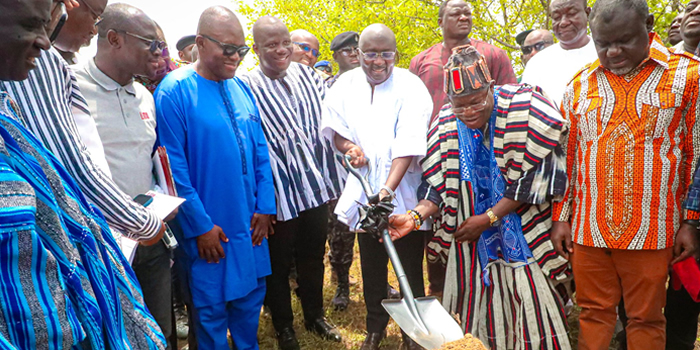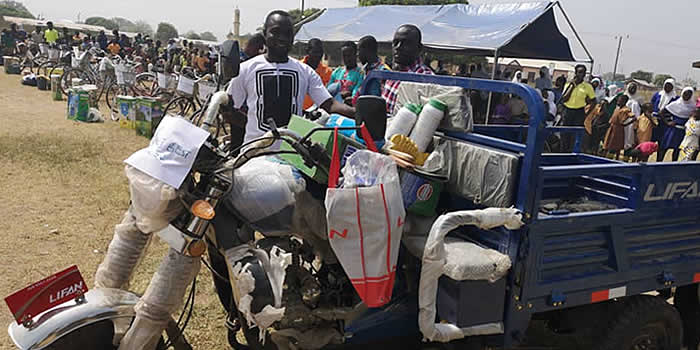

The main economic activity is agriculture, involving mainly crop production and livestock rearing. Major crops include maize, sorghum, millet, groundnut, cowpea, soya-beans, yams, rice, and cassava. Major animals reared on a very small scale include cattle, sheep, goats fowls, guinea-fowls. Animals and birds are practically reared in every home, but large scale ranching is non-existent in the district.
Large-scale fishing activities are undertaken in communities along the Volta Rivers. Agriculture though presently at the subsistence level, holds the greatest potential for the growth and development of the Central Gonja District. For example, the district has comparative advantage in the production of cassava and the rearing of livestock.
Though the agricultural sector has the potential for enhancing the local economy and addressing youth unemployment in the district, agricultural activities are constrained by erratic and inadequate rains, high cost of farm inputs and the use of non-exotic crops and animal breeds. The result is entrenched poverty among a vast majority of the people in the area. The development of the agricultural sector requires the development of necessary agricultural infrastructure such as irrigation facilities and the use of improved varieties of crops and animals.
Commerce
Though the district lacks large-scale trading and commercial enterprises, nonetheless there exist a large volume of commercial activities especially in fish, yam and maize trading around Tuluwe, Mpaha, and Boachipe areas and beans and groundnuts in markets around Kusawgu and Yapei. Traders from within and outside the district attach a lot of importance to the markets at Buipe, Mpaha, Chama and Sankpala because of the diversity and variety of items traded in them. There is an outlet of the Kintampo Rural Bank in Buipe but large-scale banking transactions, especially by departments and agencies are conducted in Tamale.
The annual average household income is estimated at ¢550,000 (an average per capita of ¢70,000). Over 80% of the population live below the national poverty line ¢900,000. Poverty manifests itself in most peoples’ inability to adequately provide for themselves and their families with their basic needs including food, health care, clothing and decent housing and also the maintenance of local
infrastructure.
Economic Groupings
Central Gonja District is characterized by a wide variety of organized economic stakeholders. The main economic groupings are agricultural groups and farmer’s cooperatives that undertake group production and marketing activities. Women groups in the small scale industries also undertake group ventures in cassava production and gari processing, groundnut production and ground nut oil extraction, shea nut processing and shea butter extraction, local soap making and rice processing.
The district abounds in good soils particularly around Mpaha and Chama, which are suitable for mechanized agriculture. There are many small alluvial valleys with potential for rice production. The district also borders on both the White and Black Volta, which provides great potentials for irrigation development. The two rivers also offer opportunities for increased fishing development. The climatic conditions are suitable for livestock production.
Limestone and dolomite deposits around Buipe, can be exploited for cement production. Sand deposits are also available around Yapei. Regarding minerals, there are unexploited gold and diamond deposits around Finbu and Digma areas respectively.
Date Created : 11/17/2017 4:37:15 AM











 facebook
facebook
 twitter
twitter
 Youtube
Youtube
 +233 593 831 280
+233 593 831 280 0800 430 430
0800 430 430 GPS: GE-231-4383
GPS: GE-231-4383 info@ghanadistricts.com
info@ghanadistricts.com Box GP1044, Accra, Ghana
Box GP1044, Accra, Ghana